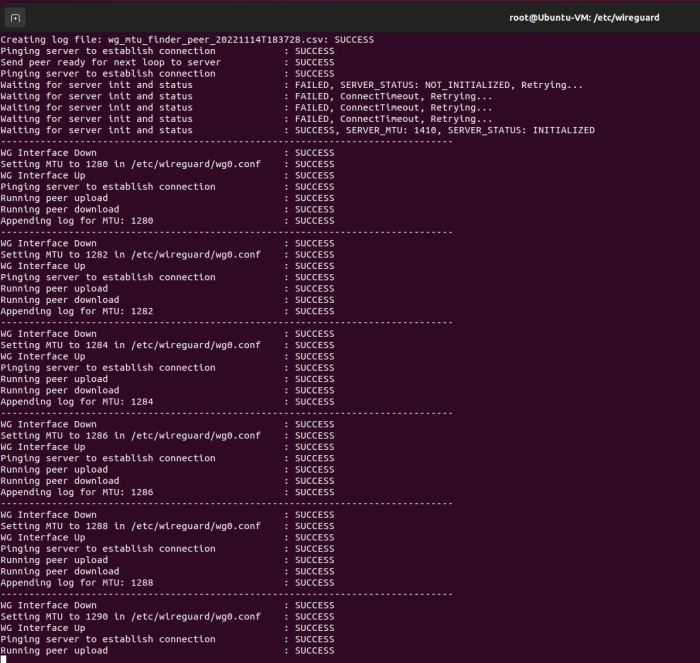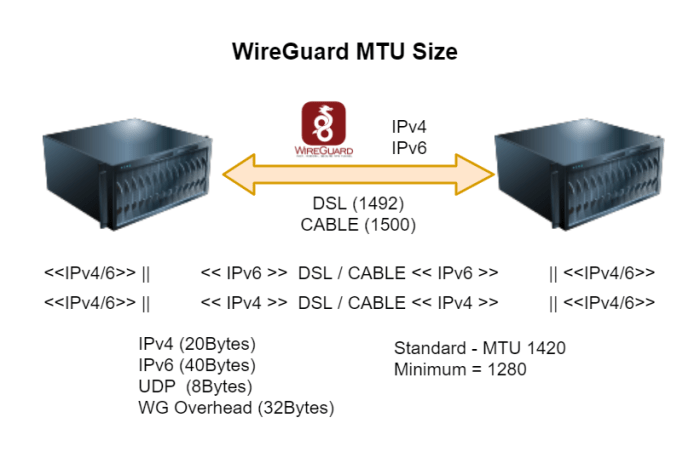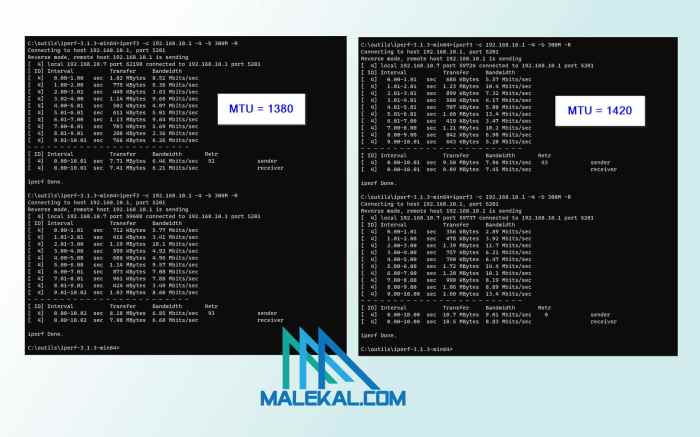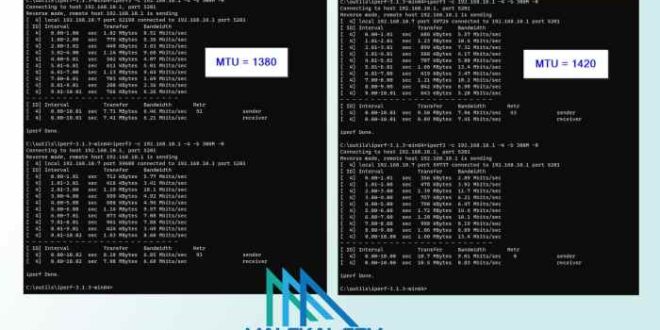In the realm of networking, the Maximum Transmission Unit (MTU) plays a crucial role in ensuring efficient data transmission. For WireGuard, a cutting-edge VPN protocol, selecting the optimal MTU is paramount to maximizing performance and security. This comprehensive guide will delve into the intricacies of MTU, its impact on WireGuard, and best practices for its management.
Understanding MTU is essential for network optimization. It defines the maximum size of data packets that can be transmitted over a network interface. An incorrect MTU can lead to packet fragmentation, causing performance degradation and potential security vulnerabilities. WireGuard’s default MTU setting may not always be optimal, necessitating careful consideration of network characteristics and topology.
MTU Basics for WireGuard
The Maximum Transmission Unit (MTU) is a crucial networking concept that defines the largest packet size that can be transmitted over a specific network interface. In the context of WireGuard, the default MTU value is set to 1420 bytes, which is the standard MTU size for Ethernet networks.
This default MTU value ensures compatibility with most networks and devices. However, in certain scenarios, adjusting the MTU size can improve network performance and efficiency.
Implications of Default MTU Value
The default MTU value of 1420 bytes implies that WireGuard packets will be fragmented into smaller segments if they exceed this size. Fragmentation occurs when a packet is too large to fit into a single frame and must be broken down into smaller units for transmission.
While fragmentation is a necessary mechanism to ensure compatibility, it can introduce additional overhead and latency.
Impact of MTU on WireGuard Performance

Maximum Transmission Unit (MTU) plays a crucial role in optimizing the performance of WireGuard. It determines the maximum size of data packets that can be transmitted over a network interface. An appropriate MTU ensures efficient data transfer, while an incorrect MTU can lead to packet fragmentation and performance issues.
Packet Fragmentation
When an MTU is set too low, it can cause packets to be fragmented into smaller pieces. This fragmentation process adds overhead to the network traffic, as each fragment requires its own header information. As a result, packet fragmentation can lead to increased latency and reduced throughput.
Furthermore, fragmented packets are more susceptible to errors during transmission. If a single fragment is lost or corrupted, the entire packet must be retransmitted, which can further degrade performance.
Determining the Optimal MTU for WireGuard
Selecting the optimal MTU for WireGuard is crucial to ensure efficient and reliable data transmission. Here, we explore methods to determine the ideal MTU value for a specific connection.
One common approach is path MTU discovery (PMTUD), which dynamically adjusts the MTU based on network conditions. PMTUD can be enabled by setting the “auto” option in the WireGuard configuration file.
Tools and Techniques for MTU Discovery and Adjustment
- ping: The ping command can be used to test the MTU by gradually increasing the packet size until fragmentation occurs.
- traceroute: Traceroute can provide information about the path taken by packets, including the MTU of each hop.
- MTU discovery tools: Dedicated tools such as pathping and mtr can assist in MTU discovery and troubleshooting.
- Manual adjustment: In some cases, it may be necessary to manually adjust the MTU by editing the WireGuard configuration file.
MTU Considerations for Different Network Environments
The choice of MTU can significantly impact WireGuard performance in different network environments. Understanding the impact of network topology and link characteristics is crucial for optimizing MTU settings.
LAN Environments
In LAN environments, where network latency is typically low and bandwidth is high, a larger MTU can improve performance. Higher MTU values allow for larger packets to be transmitted, reducing the overhead of packet fragmentation and reassembly. It is generally recommended to use the maximum MTU supported by the network devices, typically 1500 bytes.
WAN Environments
In WAN environments, where network latency and packet loss are more prevalent, a smaller MTU may be necessary to ensure reliable communication. Larger MTU values can lead to excessive packet fragmentation, increasing the likelihood of packet loss and retransmission. It is advisable to adjust the MTU to a lower value, such as 1450 bytes or even lower, depending on the network conditions.
VPN Environments
In VPN environments, where traffic is encapsulated and routed through a tunnel, MTU considerations become even more important. The MTU of the VPN tunnel must be smaller than or equal to the MTU of the underlying network. It is essential to configure the MTU of the VPN clients and servers accordingly to avoid packet fragmentation and performance issues.
Troubleshooting MTU Issues in WireGuard

To troubleshoot MTU-related problems in WireGuard, follow a structured approach that includes identifying common symptoms and applying appropriate solutions.
One common symptom of an MTU misconfiguration is packet fragmentation. This occurs when packets are larger than the MTU, causing them to be split into smaller fragments. Fragmentation can lead to performance degradation and packet loss. To resolve this issue, reduce the MTU to a value that is compatible with the network path.
Network Path MTU Discovery
Another common symptom is the inability to establish a WireGuard connection. This can be caused by an MTU mismatch between the two endpoints. To resolve this issue, determine the MTU of the network path between the endpoints. This can be done using tools like ping or traceroute . Once the path MTU is known, configure both endpoints to use a lower MTU that is compatible with the path.
MTU and VPN Performance

The Maximum Transmission Unit (MTU) plays a crucial role in the performance of Virtual Private Network (VPN) connections, particularly when using WireGuard. Optimizing MTU can significantly improve VPN throughput and reduce latency.
When a data packet is too large to be transmitted over a network, it is fragmented into smaller packets. However, this fragmentation process introduces overhead and can slow down the VPN connection. By setting the MTU to the optimal value, you can avoid fragmentation and improve performance.
Impact of MTU on VPN Throughput
The MTU directly affects the throughput of a VPN connection. A higher MTU allows for larger packets to be transmitted, reducing the number of packets that need to be sent and reassembled. This results in a faster and more efficient data transfer.
Impact of MTU on VPN Latency
MTU also impacts VPN latency, which is the time it takes for data to travel from one end of the connection to the other. A higher MTU reduces the number of packets that need to be sent and reassembled, which in turn reduces the overall latency of the VPN connection.
Advanced MTU Techniques
Beyond the basics, there are advanced MTU optimization techniques that can further enhance WireGuard performance.
One such technique is Path MTU Discovery (PMTUD) , which allows devices to automatically discover the optimal MTU for a specific path.
PMTUD with WireGuard
PMTUD is a valuable tool for WireGuard, especially in scenarios with complex network topologies or varying MTU values along the path.
When enabled, WireGuard will utilize PMTUD to probe the network and determine the optimal MTU for each connection, ensuring maximum performance and reliability.
MTU and Security Considerations
Optimizing MTU can enhance the security of WireGuard connections by reducing the likelihood of fragmentation and reassembly, which can introduce vulnerabilities. Smaller packets are less likely to be fragmented, making them more difficult to intercept and manipulate by attackers.
Packet Fragmentation and Security Risks
When packets are fragmented, they are divided into smaller segments that can be transmitted individually. This process can introduce security risks, as attackers can exploit the gaps between fragments to inject malicious data or disrupt the communication.
By optimizing MTU, we can minimize fragmentation and ensure that packets are transmitted as single, larger units. This reduces the attack surface and makes it more difficult for attackers to compromise the connection.
Best Practices for MTU Management
Implementing effective MTU management strategies is crucial for optimizing WireGuard performance. Here are some best practices to consider:
Recommended MTU Values for Various Network Scenarios:
- Ethernet networks: 1500 bytes
- Wi-Fi networks: 1492 bytes
- Cellular networks: 1472 bytes
Adjusting MTU values based on network conditions is essential to minimize fragmentation and packet loss. Smaller MTU values may be necessary for networks with higher latency or packet loss, while larger MTU values can be utilized on networks with low latency and minimal packet loss.
MTU Discovery Techniques
To determine the optimal MTU for your network, consider using MTU discovery techniques such as:
- Path MTU Discovery (PMTUD): Automatically adjusts the MTU based on network feedback.
- Manual MTU testing: Gradually increase the MTU value until packet loss occurs, then reduce it slightly.
By implementing these best practices and utilizing appropriate MTU discovery techniques, you can ensure optimal MTU settings for your WireGuard connections, maximizing performance and minimizing network issues.
Last Word
Optimizing MTU for WireGuard requires a thorough understanding of network dynamics and the impact of MTU on performance and security. By carefully determining the optimal MTU, utilizing advanced techniques like PMTUD, and adhering to best practices, you can unleash the full potential of WireGuard.
This guide has provided a comprehensive roadmap for MTU management, empowering you to maximize network efficiency, enhance security, and enjoy a seamless VPN experience.
